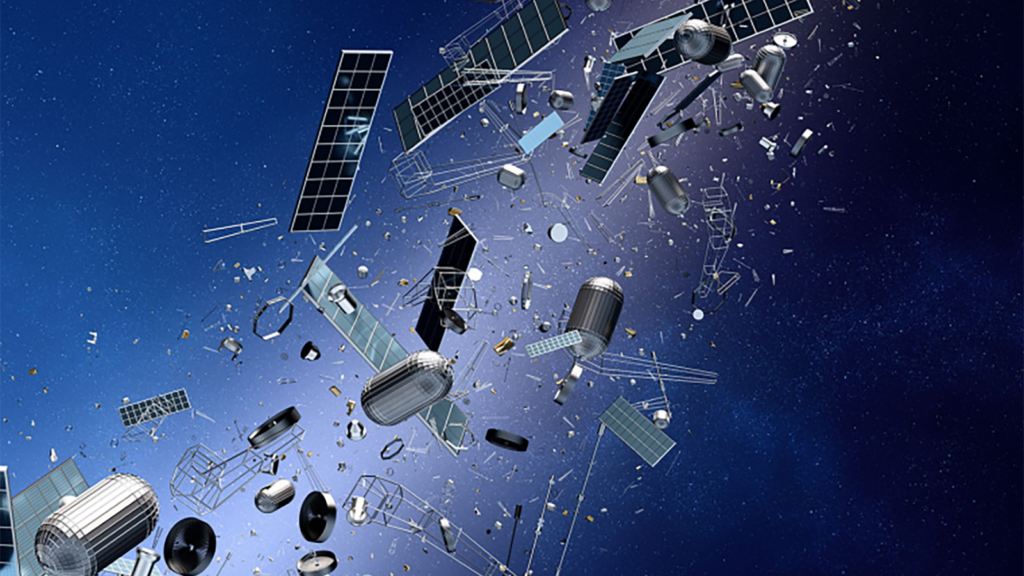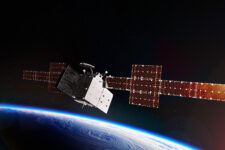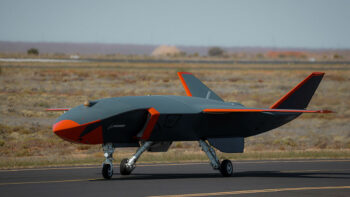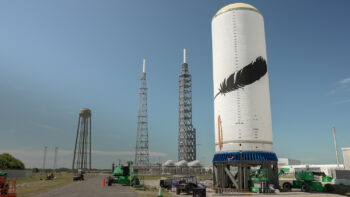
Even tiny pieces of space junk can harm or destroy a satellite. (Image: National Space and Intelligence Center)
WASHINGTON: The White House has issued its long-awaited implementation plan for combating the rapid growth of dangerous space debris, setting up a whopping 44 separate tasks for the Defense Department, NASA, the Commerce Department and other agencies — largely in the research realm, but including a review of best practices for operators.
Most importantly, the “National Orbital Debris Implementation Plan” [PDF] includes re-opening the question of whether government, civil and commercial operators should be exhorted, or required under licensing regulations, to deorbit dead satellites earlier than the deadline of 25 years after end of life.
Many scientists and industry players have been chivvying the US government on the issue of over-crowding in the heavens, particularly in Low Earth Orbit (LEO) where thousands of new satellites are going up. Requiring operators of large constellations to bring down their satellites in a controlled manner earlier is one way to help ensure that LEO doesn’t become so littered that operating there becomes impossible.
The Space Force, in fact, last year called upon industry to work on developing “trash trucks” on orbit to pick up large pieces of space junk such as dead satellites and either push them down into the atmosphere to burn up or pull them up to higher orbits currently unpopulated with active spacecraft.
The new study is to be led by NASA — which led the last (and controversial) review of the US government’s Orbital Debris Mitigation Standard Procedures in 2019 — with the support of DoD, Commerce, the Federal Aviation Administration (FAA) and the Federal Communications Commission (FCC). While the plan does not specify a deadline, it notes that the study is to be “short term” and that it should include a cost-benefit analysis of changing the deorbit deadline.
The US military, specifically Space Command, currently collects data on and tracks space objects and notifies spacecraft operators of possible collision. The Trump administration’s 2018 Space Policy Directive-3 (SPD-3) called for the creation of a civil agency to provide space situational awareness assistance to non-military space operators. And the Pentagon now is nearing a transition of the responsibility for providing notifications for civil and commercial operators to the Commerce Department.
Commerce currently has regulatory power only over operators of remote sensing satellites, via the National Oceanic and Atmospheric Administration.
The FAA, which regulates satellite launch, and the FCC, which regulates operator use of radio-frequency spectrum for broadcasting, also have policies and/or regulations that are intended to limit the creation or accumulation of debris.
The implementation plan, put together by the White House Office of Science and Technology Policy (OSTP), builds upon the National Orbital Debris Research and Development (R&D) Plan published in 2021 just before the end of the Trump administration.
Further, the document takes pains to note that the plan also forwards SPD-3, which sets in motion the potential regulation of space traffic, and that OSTP is working hand in glove with the National Space Council on the latter issue.
OSTP lays out specific actions assigned to various agencies in three categories: debris mitigation; object characterization, tracking and custody; and remediation. The Pentagon is assigned the lead or co-lead on some 17 tasks, but is supporting a large number of others as well. Of those where the Pentagon will be at the helm, the list includes:
- Research options and develop software solutions for determining when and how to maneuver a spacecraft to avoid a potential collision. (co-lead with NASA).
- “Explore developing a database for satellite operators to report on anomalies and, if available, the root causes of the anomalies and lessons learned. Investigate concepts for timely shared knowledge among spacecraft owners/operators that will propagate best practices on a useful timescale.” (Although the goal would be to transfer this to Commerce once its Office of Space Commerce has its own database up and running.)
- “Expand the current catalog of resident space objects to include parameters of the
objects that are necessary for the design of debris remediation.” (Again, until transitioning to Commerce.) - Sponsor research and development on how to measure the physical characteristics of debris.
- “Prioritize research that analyzes how to acquire more satellite tracking data from
existing systems.” - “Provide a research collaboration platform to the orbital debris community such as an open-architecture, application programming interface to facilitate the bidirectional exchange of data, algorithms, and documentation with academia, research centers, such as FFRDCs, and commercial entities.”
- Review current policies for distributing orbital tracking data.
- Advance enabling technologies for “remediation and repurposing” spacecraft or components, such as development of standards for interfaces to link satellites to orbital transfer vehicles.
HASC adds Virginia-class sub, cuts F-35s in $849.8 billion draft defense policy bill
The bill sticks to budget caps laid out by the Fiscal Responsibility Act.


























